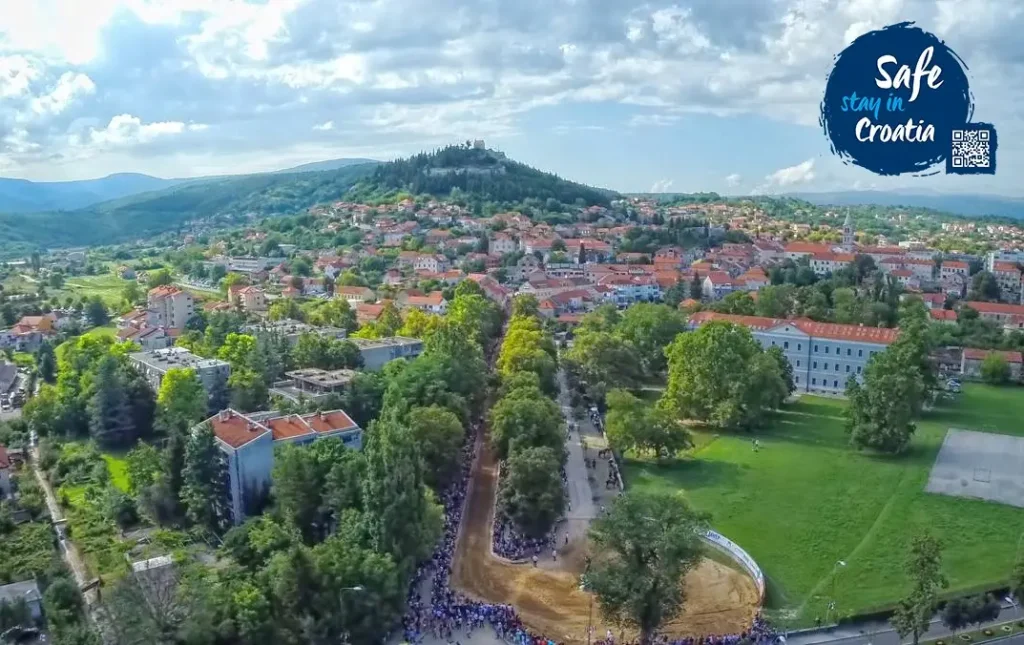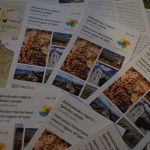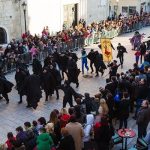Celebrations
What was also apparent over the weekend was the willingness for all to contribute to the success of this post-season event and to draw more attention to Croatia as a whole, not just Hvar. Arriving on Friday we were thrilled to meet Monika Vrgoč from the Sinj Tourist Board. We were also curious to know how and why Sinj was involved in the event as it is an inland area of Dalmatia in our minds not terribly associated with the islands or to Hvar.
Lucky for us it didn’t take long to figure the how they were involved as lunch for the first day of celebrations was a Sinj specialty, arambaši. This was served alongside cured meat products and traditional music, all providing a very homely heartwarming feel to the event, despite the weather and rain.
Tucking into the arambaši, we wanted to know more. We were thrilled to learn that the Peškafondo isn’t just to promote the island, seafood, and activities. It’s also to showcase the amazing culture of Croatia from inland to the coast, to the islands, and everything in between.
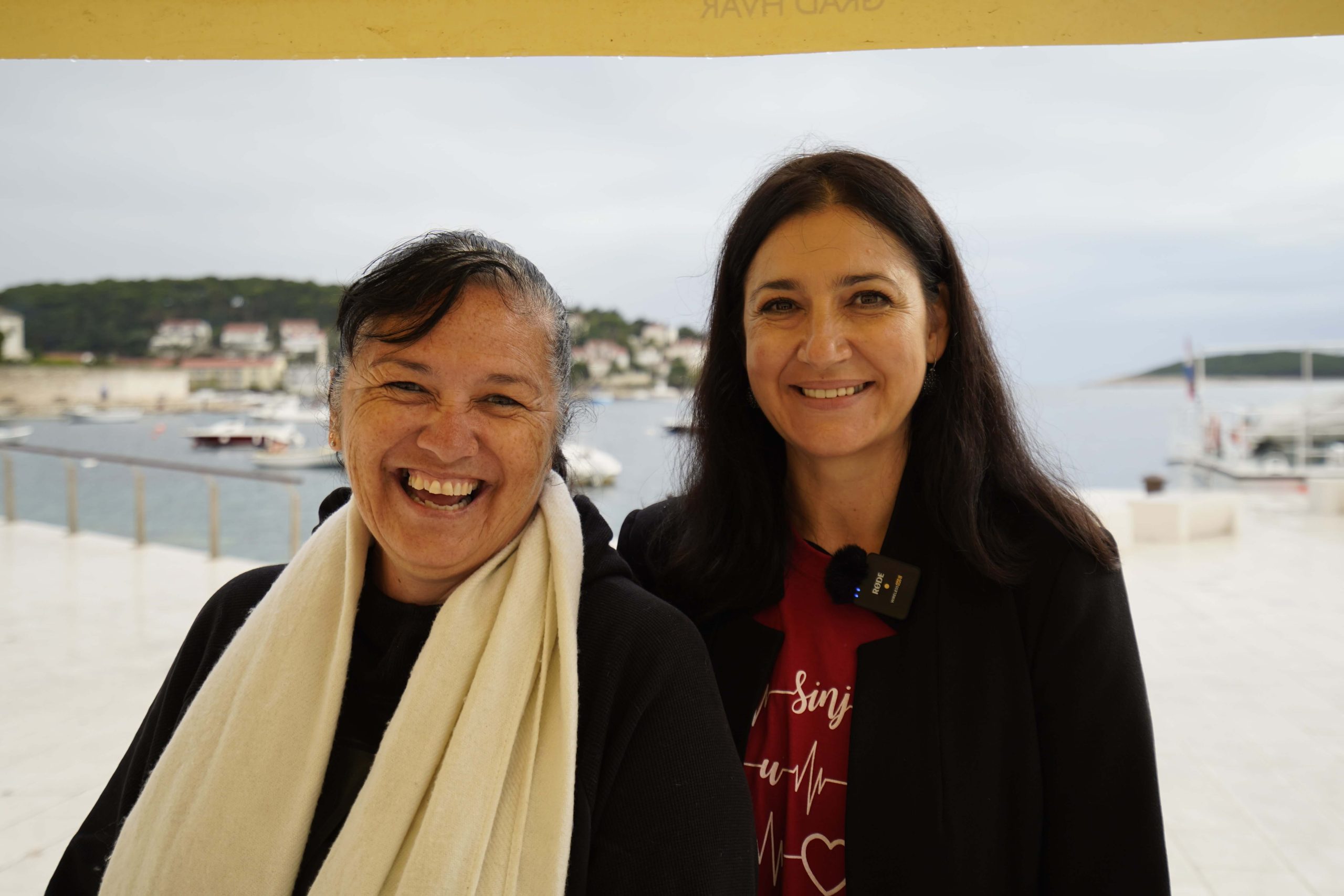
Sinj Traditional Specialities
– Arambaši
Coming to Hvar the chefs from Sinj turned out their traditional specialty: arambaši, a most important festival dish. The arambaši of Sinj consists of chopped beef, smoked bacon wrapped up in pickled cabbage leaves together with a special and traditional blend of spices, including onion, red onion, parsley, pepper, and salt. These cabbage rolls are arranged in a pot along with a beef bone, covered with finely cut pickled cabbage, adding a piece of prosciutto and a few homemade sausages, locally known as sudžuk. This is then left to cook for several hours with no mixing. The aroma that wafted around the event as everyone was arriving, kept everyone on alert clear that there was going to be a great feast for lunch. And we were not disappointed.
We also learnt that while to the foreign/untrained eye, arambaši may look like regular sarma. But sarma IT IS NOT! It differs from sarma in three distinct ways: the meat is chopped, not minced, there is no rice added to the chopped meat mixture and the spice blend is different from the spices used in sarma, creating a unique and traditional taste.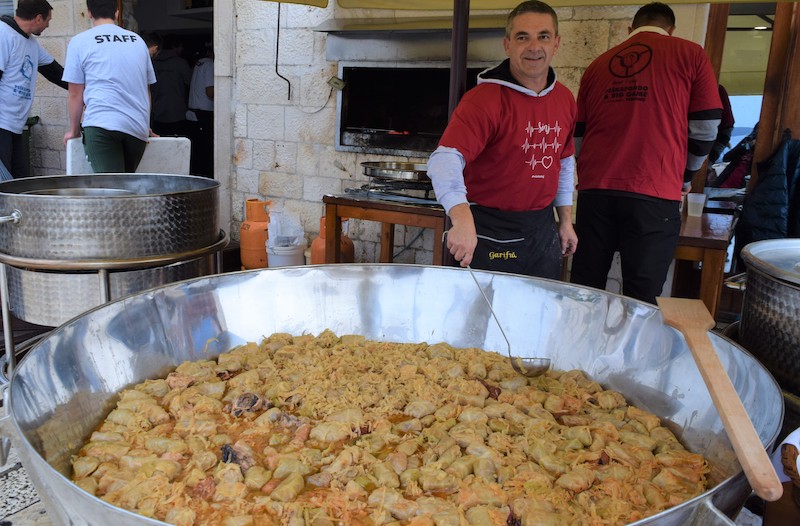
– Uštipci
Along with the arambaši, we were also treated to another speciality of Sinj cuisine called uštipci, a long flat deep-fried bread that was served with a smooth flavoured young cheese. Another delicious specialty of Sinj. Huge thanks to the Sinj Tourist Board in Cooperation with the Secondary School Vocational and the Red Cross for putting on such a great spread!
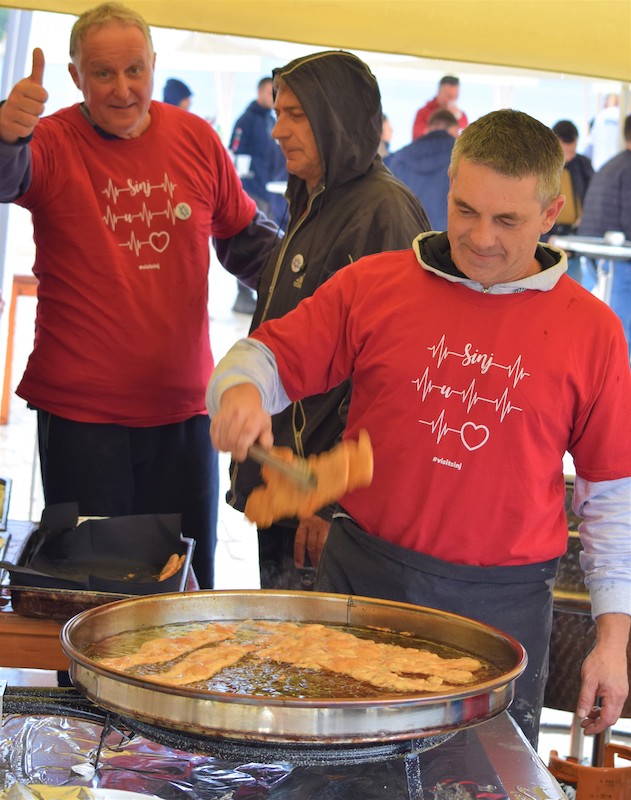
https://www.youtube.com/watch?v=v=u3sHRojWzy0
If you, like us, had no idea where Sinj is or what it has to offer, here is a quick overview:
- According to the 2011 census, the town itself has a population of 11448 inhabitants, with the immediate surrounding area having a population of 24,832.
- Located in the heart of the Dalmatian hinterland, Sinj is 30km from the Adriatic Sea.
- The town is surrounded by beautiful mountains of Kamešnica, Svilaja, and Dinara.
- It is situated at the edge of the fertile Sinjsko Polje Valley and invigorated by the amazing crisp, clear Cetina River.
And it’s not just the location that makes Sinj such a great place to visit. We were pretty impressed to hear about the activities and offerings that Sinj has available throughout the year. From the history contained both in the museums as well as the living history demonstrated at the festivals, to more active pursuits like hiking, skydiving… The list goes on!
https://www.youtube.com/watch?v=v=zI72wrkGvKU
The Alka tournament sounds amazing! So much so that we have put it into our diary next year. Learn more about this global festival here.
Cooperation and Collaboration
Now we can’t just leave this story here because on the second day there was another amazing collaboration, with chefs and friends from Skradin outdoing themselves with serving their famous Skradin risotto and of course famous oysters for lunch. Find out more about this amazing slow-cooked dish in an article written by Expat In Croatia.
Again, the food was delicious, amazing smells and tastes, and very interesting for us to learn about the cooperations that were going on to create this festival.
The squid was like the second event, the main event being the people altogether, celebrating the great atmosphere from the sea from the culture, and from the people.
If this is anything to go by combining resources and creative efforts means increased reach and exposure while spending more efficiently. Together, we will elevate Croatia’s platform, enabling Croatian culture to thrive as an all-year-round tourism destination.
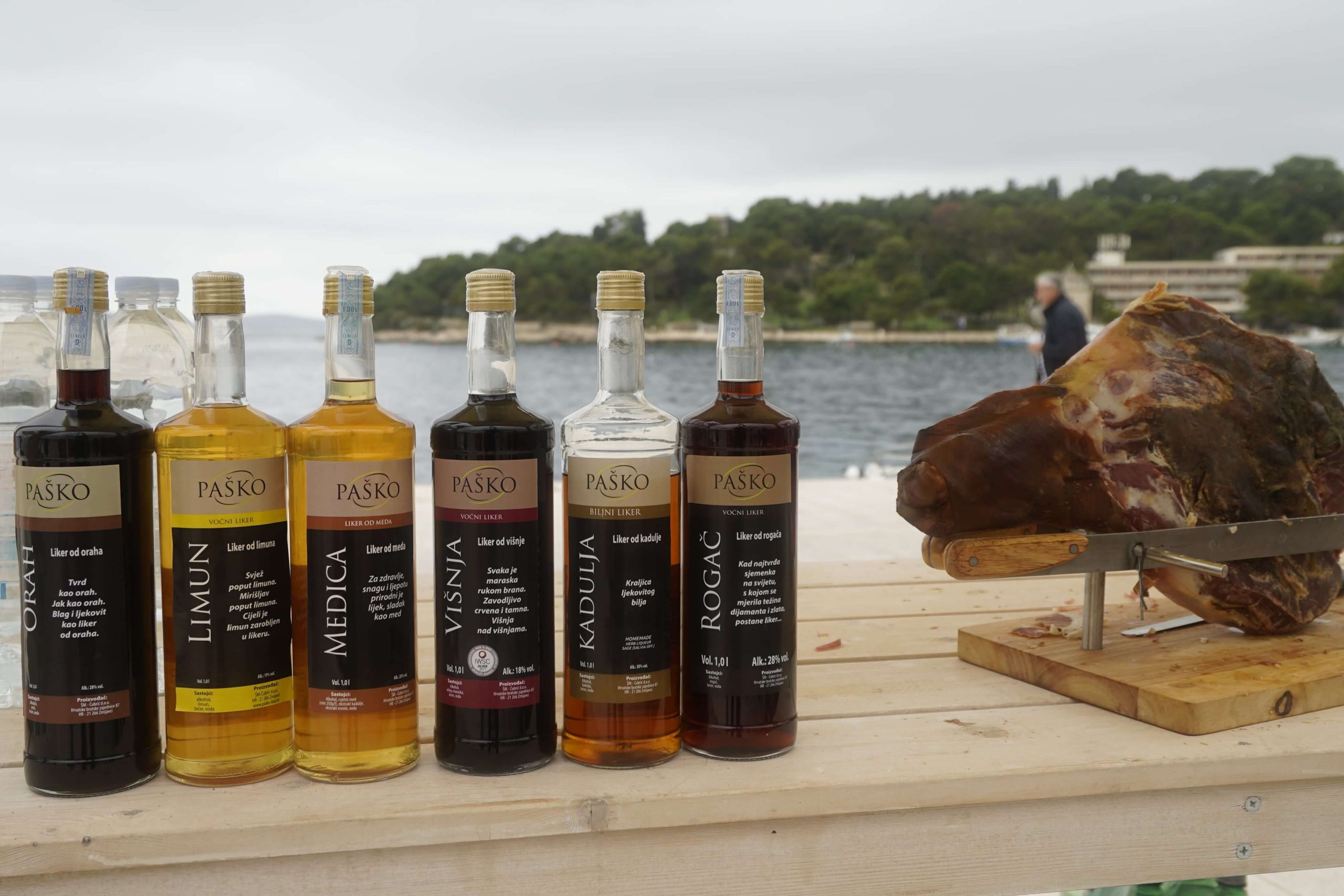
Read some history to the Peškafondo event here: Celebrating Ten Years of Peškafondo

